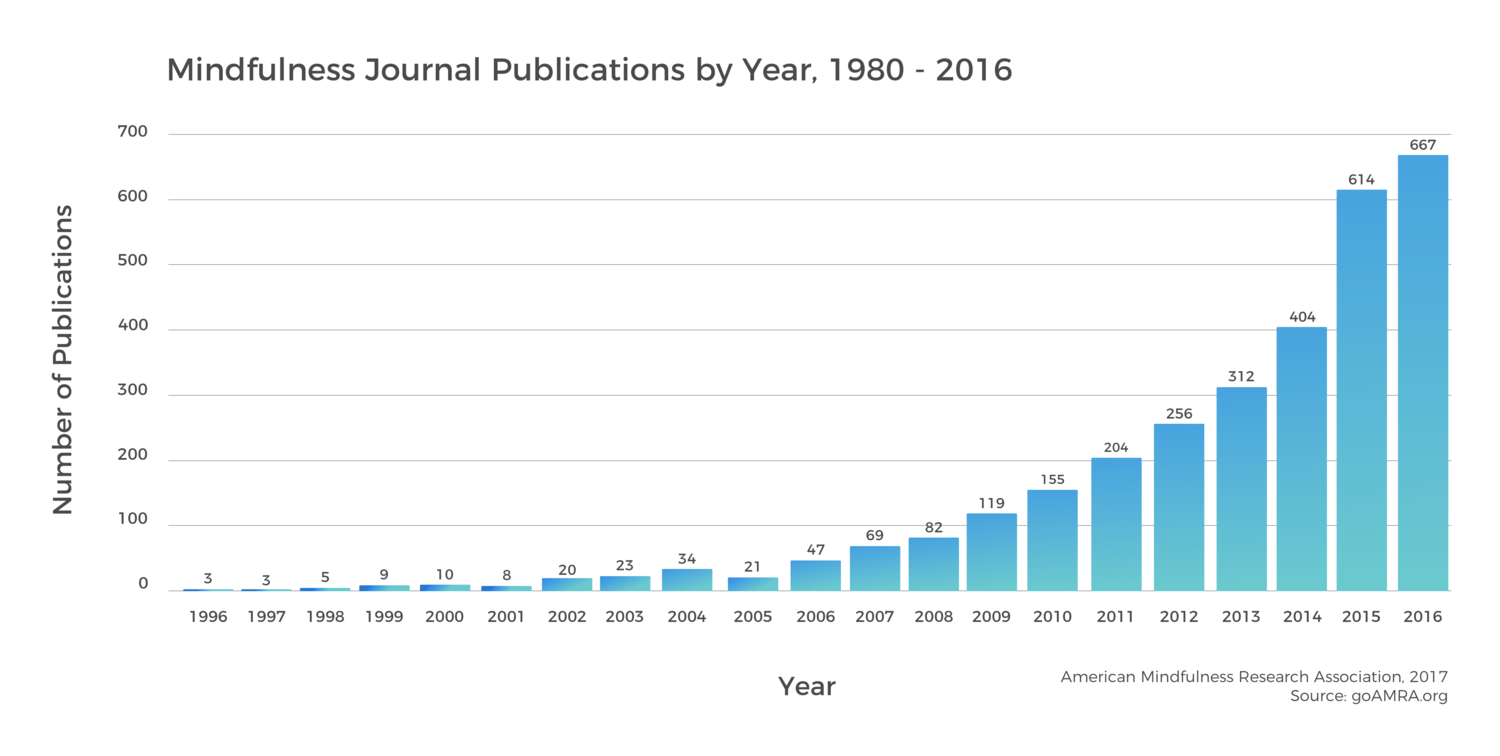How’s this for a trend: in 1996, just three articles about mindfulness were published in scientific journals. In 2006, that number jumped up to 47. Ten years after that, there were 667.
That’s a whopping 22,133 percent increase over two decades. And all that research is why mindfulness feels like a sudden cultural force—even if it’s decades (or centuries!) in the making.

Jon Kabat-Zinn, who reports these figures in a new article in the journal Mindfulness, describes it as an “exponential flowering” in the research literature. The author of Wherever You Go, There You Are, Kabat-Zinn played a big role in that growth: 38 years ago, he developed Mindfulness-Based Stress Reduction (MBSR), an eight-week course first developed to help people with pain management.
The cold, hard data is why mindfulness is the hot new thing—as good-naturedly familiar as kale or yoga. This boom in research “is functioning, both for better and for worse, as a primary driver of the worldwide interest in mindfulness,” Kabat-Zinn notes. This was the intent back in 1979, he explained to Thrive Global in an earlier interview: if MBSR did well as a clinical intervention, then mindfulness would radiate through medicine, into mainstream science and out into society at large.
While meditation had been personally studied for 80-some generations in Asia by practitioners, Kabat-Zinn felt that these clinical trials and research studies would provide the empirical, objective validation needed for mindfulness to be taken seriously by the West’s arbiters of truth—the academic and medical establishment. The convergences between Buddhism and the brain sciences have since abounded; check out Robert Wright’s Why Buddhism Is True—and our interview with him—for a thorough primer.
There are, Kabat-Zinn notes, consequences to mindfulness being propelled into the mainstream by research. Reporters get interested, and relay more and less accurate accounts of the practice, capitalists capitalize on it, as they tend to do, and purists decry the separation of an ancient practice from its home within one of the world’s great wisdom traditions. All of these things have happened, Kabat-Zinn says in the Mindfulness paper, and he’s okay with it.
The reason for his calm abiding? There are bigger fish to fry, like the human condition. If the “mindfulness revolution” is a way for thousands, if not millions, of people to feel more whole—by changing the stories they tell themselves about themselves, the way they think about their thoughts, and what they take love to mean—why not embrace it? “Buddhism is never about Buddhism” as a religion, Kabat-Zinn said. “It’s about suffering and recognizing the causes of suffering and the potential for liberation from suffering.”


